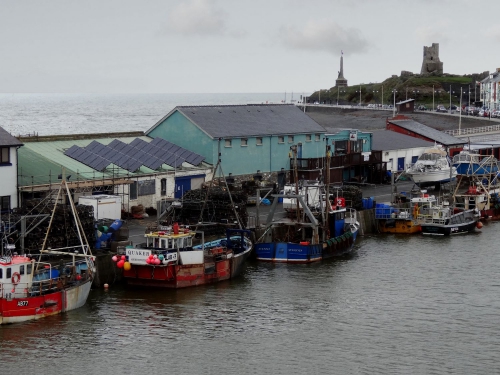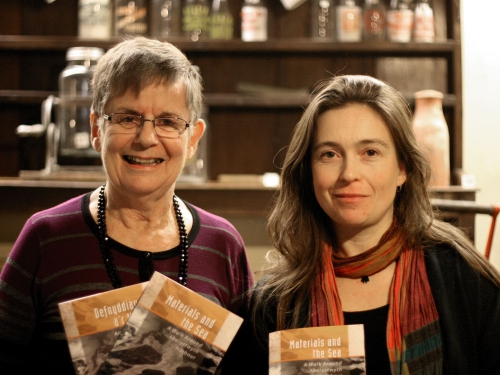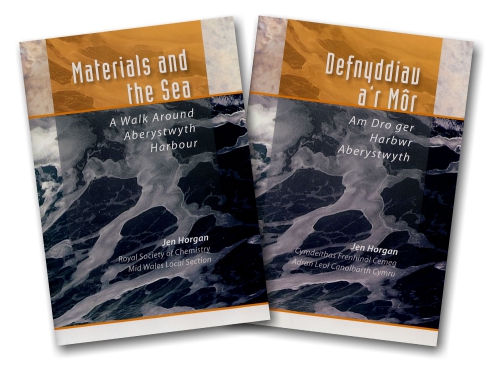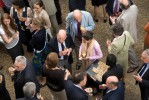
Members of the Mid-Wales Local Section of the RSC joined Friends of the Ceredigion Museum, Aberystwyth, on 25th November 2013 for the launch of a ‘chemistry trail’, a guide for local residents and visitors to the significance of chemistry in the coastal environment — and in Aberystwyth Harbour / Marina in particular.
‘
Materials and the Sea’ and ‘
Defnyddiau a’r Môr’ are the titles of the English and Welsh editions of the 16-page illustrated booklet, which is available from Ceredigion Museum. It takes readers for ‘a walk around Aberystwyth Harbour’, drawing attention to and asking questions about many features of harbour life and activities.

Conceived, developed and written by Dr Jen Horgan, a committee (and committed) member of the local section, it suggests that readers start at the harbour’s ‘interpretative seat’ which records the historic importance of metals to the local economy, particularly lead and silver which were mined locally for many centuries.
The different materials used for the hulls of boats, from wood in medieval times to the fibreglass and glass-reinforced plastic today, are compared. The chemical corrosion of metals in hulls, lobster pots and railings is described in terms appropriate for youngsters studying science at school, and methods of preventing corrosion, such as the use of sacrificial anodes, are explained. The many kinds of rope in the harbour, often unnoticed, allow comparison of the properties of natural fibres (hemp, sisal, coir) with those of synthetic materials (nylon, polypropylene, polyester).
Occasionally, attention is diverted away from the harbour to discovering where ropes were made at the ‘rope-walk’, to the neighbouring ruins of Aberystwyth Castle which was the base for a Royal Mint for a few years during the Civil War, and used local silver to produce coinage, or to the Ceredigion Museum to examine its displays of ropes and locally-minted coins.

It is anticipated that this guide will be both interesting and enlightening for local residents and visitors alike, and be useful to schools in relating chemistry to the local surroundings. The Mid-Wales Local Section is most grateful for the work Jen Horgan has put into this project, drawing on her experience of teaching and explaining. Funded by the RSC, the project follows the RSC’s strategy of familiarising the public at large with the importance and impact of chemistry.
Dr Brian Davies



 It is anticipated that this guide will be both interesting and enlightening for local residents and visitors alike, and be useful to schools in relating chemistry to the local surroundings. The Mid-Wales Local Section is most grateful for the work Jen Horgan has put into this project, drawing on her experience of teaching and explaining. Funded by the RSC, the project follows the RSC’s strategy of familiarising the public at large with the importance and impact of chemistry.
It is anticipated that this guide will be both interesting and enlightening for local residents and visitors alike, and be useful to schools in relating chemistry to the local surroundings. The Mid-Wales Local Section is most grateful for the work Jen Horgan has put into this project, drawing on her experience of teaching and explaining. Funded by the RSC, the project follows the RSC’s strategy of familiarising the public at large with the importance and impact of chemistry.